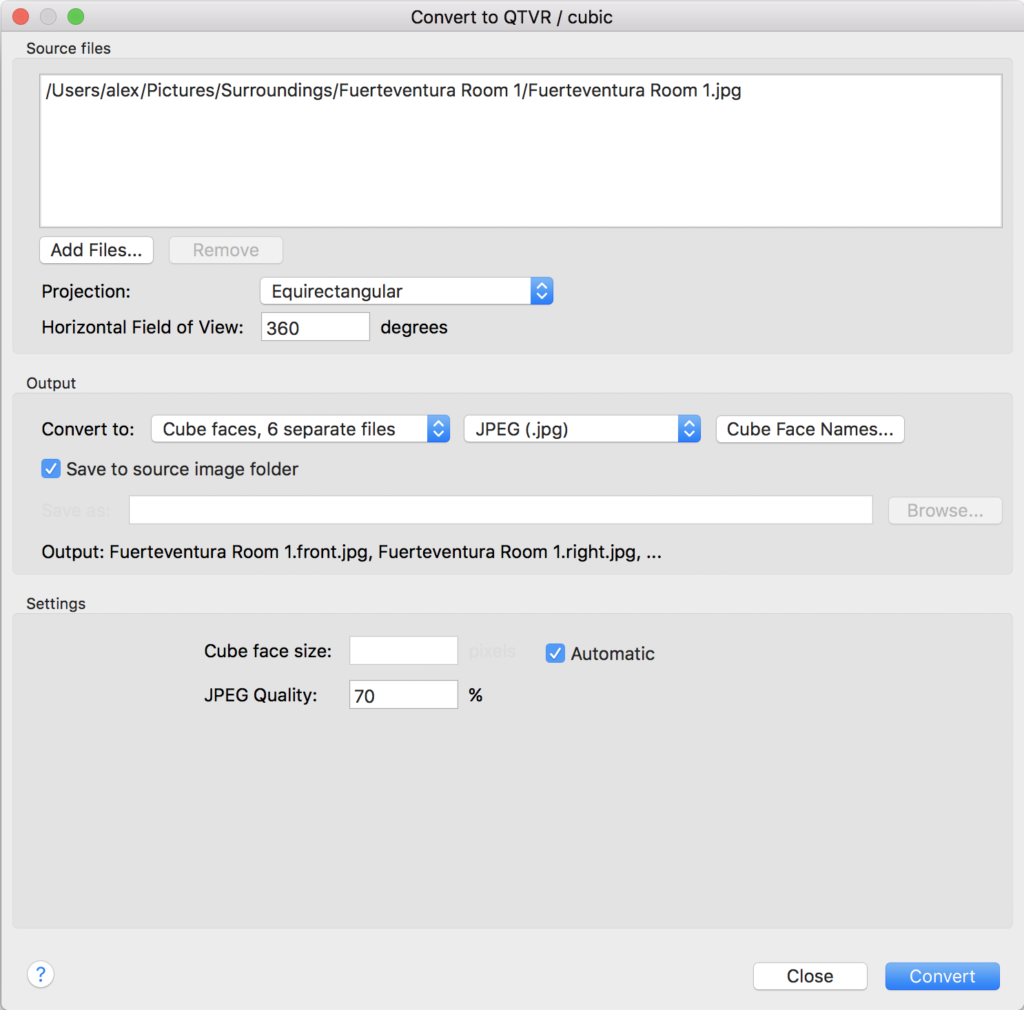
- #Ptgui export side by side how to#
- #Ptgui export side by side movie#
- #Ptgui export side by side pro#
- #Ptgui export side by side download#
PTGui has a main interface window and the Panorama Editor window.


Images will be extracted from the videos to the project folder,.Without features in the video the calibration will be difficult (or even useless). Avoid featureless parts where the video only shows blue sky or white walls. Choose a point on the timeline that represents the video as whole in regards to distance to objects.If all fails and the synchronization does seem way off proceed to Remark 2.100 fps the offsets will be larger than with 24 fps. If you started the cameras manually one by one the offsets can be larger since it takes a couple of seconds to turn all cameras on. if you started the cameras with the Wifi remote the offsets shouldn’t be more than a couple of frames. Check that the offsets are reasonable, i.e.If there is no audio signal for synchronization please see Remark 2 on the bottom of the page. For this part of the tutorial we assume there was a loud sound pattern (like a clap) at the start of the video. Synchronization: Creating a good calibration and therefore a good final video requires that the source videos are properly synchronized.Drag and drop your six source videos into VideoStitch.Choose your Language: English or French.Calibration Tool: Browse to the folder that contains PTGui.Choose your CUDA Device (only necessary if you have more than NVIDIA card in your system).Note: The Output, Interactive and Process panels become available after a calibration has been imported and a video is ready to stitch. Here is a picture of the interface: The workspace consists of 4 panels which are stacked behind each other (upper right corner).VideoStitch opens onto the Source panel. However, if you already familiar with PTGui and its panorama stitching capabilities feel free to skip the middle tab. Therefore great care should be applied to this part to achieve the best possible result. A calibration is a stitching template for VideoStitch. The middle part is about editing the calibration in PTGui. The process starts and ends with the VideoStitch interface: load the images, synchronize, create a calibration, apply the calibration, adjust exposure, preview the result as equi-rectangular or interactive movie, choose output parameters and render.

The VideoStitch workflow consists of three parts presented in the tabs below. The 360º video stitching workflow with VideoStitch using PTGui as calibration tool: Use this template to start building your own calibration for VideoStitch.It gives you a good starting point, but you still need to optimize it. It contains all basic settings and image parameters to create a first stitch.The template is optimized for the Freedom360 mount with GoPro HD Hero3 black cameras.
#Ptgui export side by side download#
#Ptgui export side by side movie#
If there are several movie files please see Remark 1 below for more info.

#Ptgui export side by side how to#
Shoot video: learn more about camera settings and how to connect and use the wifi remote in Tutorials.clapping hands) at the beginning of the video. Use the same frame rate with all GoPro cameras.Minimum requirement to achieve a good stitch:
#Ptgui export side by side pro#
PTGUI pro (or Hugin) for camera calibration (and stitching templates).NVIDIA graphics card: CUDA compatible, compute capability 1.3 or better, 2GB minimum, 4GB recommended (more CUDA cores are better, more GPU memory lets you render larger frames).VideoStitch Workflow and Tips System requirements:


 0 kommentar(er)
0 kommentar(er)
